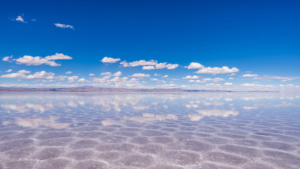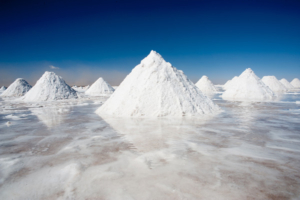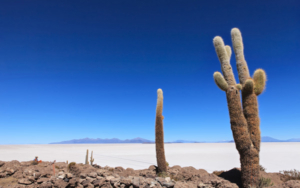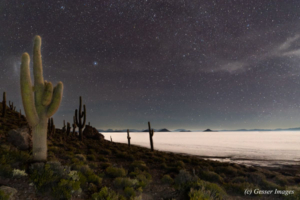Salar de Uyuni
The Salar de Uyuni is a vast salt desert of 10,582 sqkm located in the highlands of southwest Bolivia, at an altitude of 3,658 metres. Its size makes it the largest desert of salt in the world and contains one third of the exploitable lithium reserves on the planet.
Its origins date back to the disappearance of the prehistoric Tauca lake 14,000 years ago, which gave birth to the largest salt crust in the world, which covers the Salar today. In its drying out, it left behind two small lakes that are still visible, the Poopó and Lake Uru Uru, and two major salt deserts, Salar Coipasa and the huge Salar de Uyuni.
The salt is mined, but the annual output of about 25,000 tonnes is unlikely to exhaust the estimated 64 billion tons of salt (in fact, the thickness of the salt varies from 2 to 120 metres depending on the location).
The Salar de Uyuni is swept by winds relatively continuously throughout the year. Between January and March, rainfalls flood the banks of the Salar, which can be covered with a foot of water.
Several trails cross the Salar. Four wheel drive vehicles can travel safely there, but its passage may be more difficult from December to March when the Salar de Uyuni is sometimes flooded for several weeks. As the Salar is perfectly flat, when it becomes flooded the liquid covers its entire surface, making it a gigantic mirror. The reflection of sunlight on the surface of the salt desert causes a high glare, requiring the wearing of high protection sunglasses. A further curiosity of the Salar is the island of coral Incahuasi, totally isolated in the salt desert, with cactus-covered candelabra some of which are over 1,200 years old.






